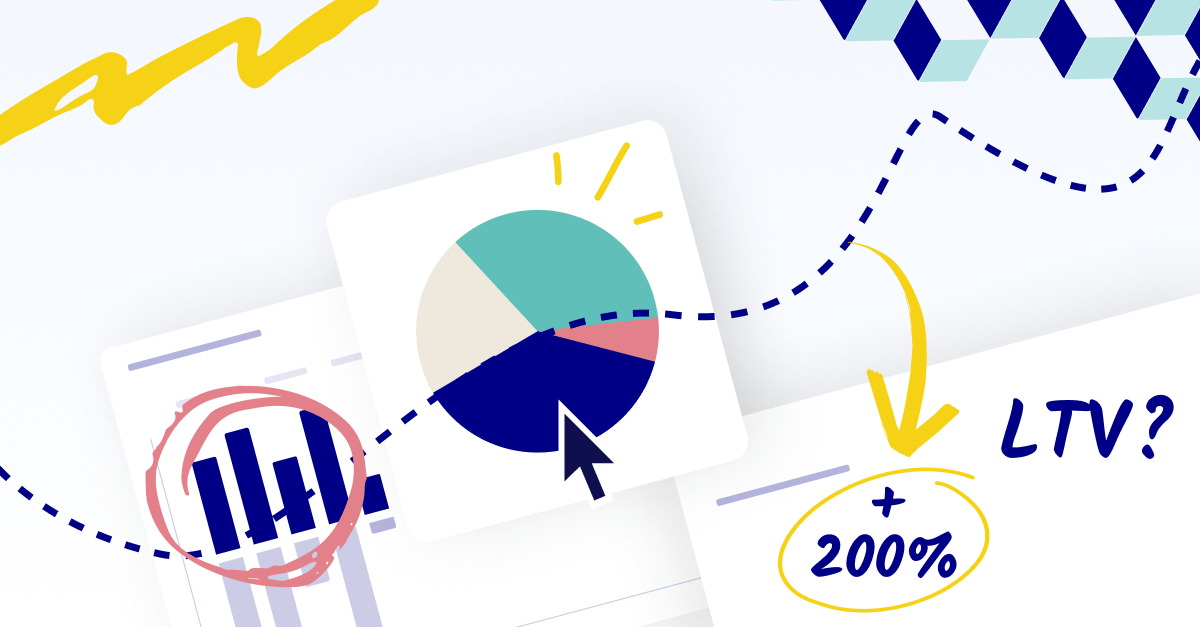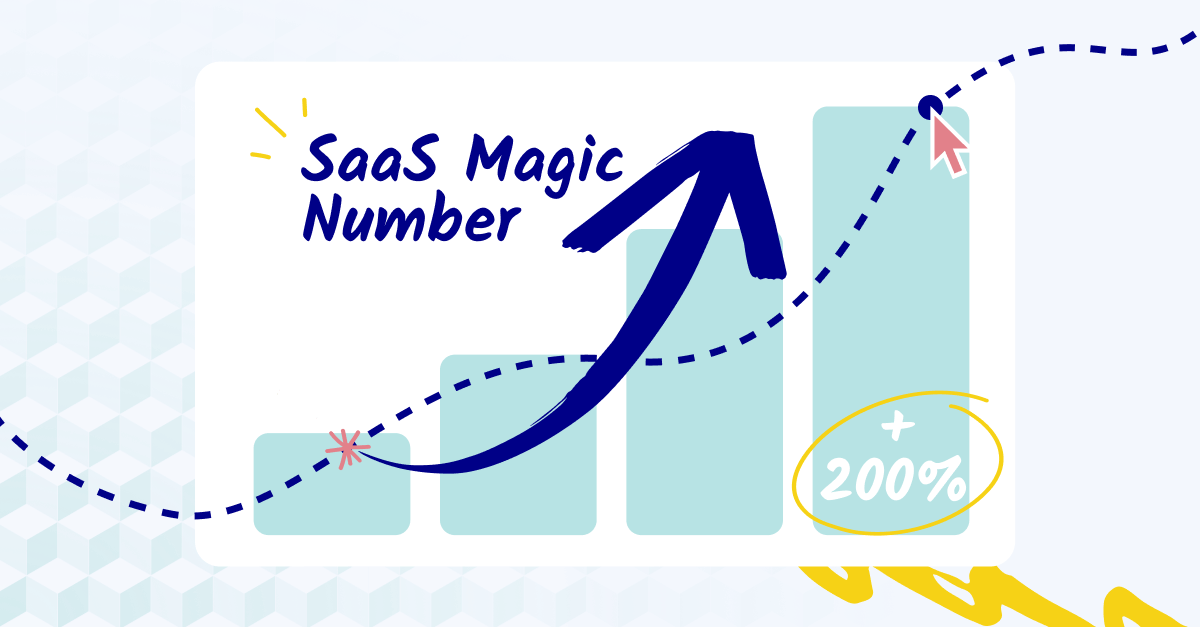Key takeaways
- Customer Lifetime Value (LTV) is the dollar amount you can earn from a customer over their time with your company.
- LTV is an essential piece of many other SaaS metrics, like the LTV/CAC Ratio, retention and churn, and even the SaaS Magic Number
- The easiest way to calculate LTV is Average Revenue Per User (ARPU) times customer lifetime.
- To improve LTV, focus on both customer expansions and reducing churn
What is customer lifetime value (LTV)?
Customer Lifetime Value (LTV) is the dollar amount you can expect a customer to spend with you during the entire time as a customer.
That is:
How much money will you earn from a single customer until they churn?
While LTV is an integral part of the LTV/CAC Ratio, it's also an important metric.
Why is customer lifetime value important?
LTV is a financial ratio that tells you how much you can expect to earn from your customers.
While that's a useful thing to know on the face of it, there are a few other things this tells you when you look at it more closely:
How much can you expect to earn from a cohort?
Knowing your LTV lets you better forecast projected revenue from your customers when doing cohort analysis.
For example, if your LTV is $20k and you have a cohort who, on average, from whom you've only earned $7k, then you can infer that this cohort will still pay out.
Additionally, say you dig a little deeper and look at expected earnings based on time spent with the company. This cohort is underperforming; you've only earned $7k from this at this point and other cohorts would typically give you around $15k by this point.
That's valuable information you can use to make better strategic recommendations. Do you investigate why this cohort is underperforming? Or do you stop targeting them with your sales and marketing efforts?
Lifetime value and time as a customer
Knowing your lifetime value lets you determine when you expect a customer to pay.
For example, say you've built a distribution of customer payout and found it's pretty linear.
(E.g., you're a subscription business, so every customer at the highest tier pays you $300/month until they churn.)
Since you know their expected lifetime, you can make a few inferences:
- How much more can you expect to earn from them?
- Are they performing on par with your average customer?
- If they're performing better or worse than the average, why?
This also makes you better at forecasting.
Because when you know how long you expect a cohort to stay, you can predict when they'll churn.
Customer acquisition cost (CAC) and lifetime value
Customer Acquisition Cost (CAC) is the average number of sales and marketing dollars to acquire a customer.
When you compare the two metrics, you get the LTV/CAC ratio which tells you how profitable (and efficient) your sales and marketing spend is.
Revenue retention and LTV
Your Customer Lifetime Value can also inform your revenue retention strategies, especially regarding acquisition cohorts.
For example, say you've used your LTV and customer lifetime to predict when a specific cohort will churn.
Now you have a solid reason to invest in revenue retention efforts like improving your customer success experience and creating more value-add integrations your existing customers want.
The SaaS magic number and customer lifetime value
The SaaS Magic Number is the single most important growth flag in SaaS.
It's a signal that tells you when your business is primed for growth (or not).
...how does it relate to Customer Lifetime Value?
Simple. When you can increase your Customer Lifetime Value, you stabilize your SaaS Magic Number. This also helps you predict the future.
You calculate your SaaS Magic Number with monthly recurring revenue. As you increase your LTV, your MRR will also increase.
In other words, since customers with a higher LTV either stick around longer (i.e., have a lower churn rate) or buy more from you (i.e., expand), your MRR (and therefore your Saas Magic Number) also increases.
So your LTV is super important to know.

How to calculate LTV
While there's no standard way to calculate Customer Lifetime Value, we like to take the simple approach:
LTV = ARPU * LT
In other words, your LTV is your Average Revenue Per User multiplied by your Customer Lifetime.
Let's go about defining and calculating those two numbers.
Average revenue per user (ARPU)
ARPU stands for Average Revenue Per User. What is the average dollar amount you'll earn from a given customer, per month?
(This is sometimes called ARPA, or Average Revenue Per Account.)
Fortunately, it's an easy calculation to make. Your average revenue per user is your monthly recurring revenue divided by your number of users.
ARPU = MRR / # of Users
How to calculate customer lifetime (LT)
Customer Lifetime is the number of months (or years) you expect customers to stay with your business before they ultimately churn.
Like ARPU, it's an average metric.
To calculate it, you divide your monthly churn rate into 1.
Customer Lifetime = 1 / Monthly Churn Rate
Beware of mixing metrics
We're calculating by month with these metrics.
If your metrics are by year (or some other time period), you should adjust the formulas or make the appropriate conversions.
Your numbers will be wrong if your units don't match up, so watch out.
Other ways to calculate LTV
You might be thinking:
"I have widely different customer values that comprise ARPU, so this formula washes out the difference between a high-yield customer and a low-yield customer. How else can I calculate LTV?"
In that case, you can stabilize your ARPU by dividing it by revenue churn instead of customer churn.
LTV = ARPU / Revenue Churn rate
(Calculate your revenue churn rate here.)
If you want an even more accurate view of your LTV, you can qualify your ARPU with your gross margin percentage, like this:
LTV = (ARPU * Gross Margin %) / Revenue Churn rate
How to improve customer lifetime value
Two major ways to improve your customer lifetime value (LTV) exist.
The first way is to reduce churn or increase your customer lifetime.
The second way is to focus on expansions and increase your ARPU.
Here are a few suggestions to get you thinking:
Increase ARPU with expansions
Up-sells, cross-sells, and expansions are all powerful ways to increase your ARPU, thereby increasing LTV.
This might mean developing an add-on to a subscription package, creating another pricing tier to raise the ceiling on your highest-paying customers, or bridging the gap between two more disparate tiers.
Improve your customer success experience to reduce churn
A better customer success experience is a proven way to reduce churn.
When you invest in customer success, you keep customers around longer, thus increasing their LTV.
Reduce churn by implementing customer feedback
Your customers probably aren't shy about telling you what they want.
Ask them and then give them what they ask for. This builds trust and teaches them that your company will evolve with their needs.

Limitations of LTV
Unfortunately, customer Lifetime Value (LTV) doesn't tell us the full picture.
On its own, LTV doesn't tell you anything about the cost it takes to acquire a customer (CAC). You're losing money if you spend more to acquire customers than they pay you back.
Likewise, LTV doesn't tell you anything about the CAC Payback Period, which is the time it takes to recoup the cost of acquiring a customer.
Finally, the customer lifetime value formula is only an approximation.
If you have highly variable ARPUs or cohorts (or if you're winning on expansions in the short term but losing to churn in the long term), LTV in isolation might only give you a rough approximation instead of a solid, reliable number.
Conclusion: all about customer lifetime value
Now you know all about Customer Lifetime Value (LTV).
You learn how to calculate it, how to improve it, and how to interpret it.
Now we're curious: Which strategies are you going to try first?
Whether looking at LTV at a cohort level or improving your customer success experience to fight churn and improve your customer lifetime...
Share this post on LinkedIn and tag us to keep the conversation going.



.png)









